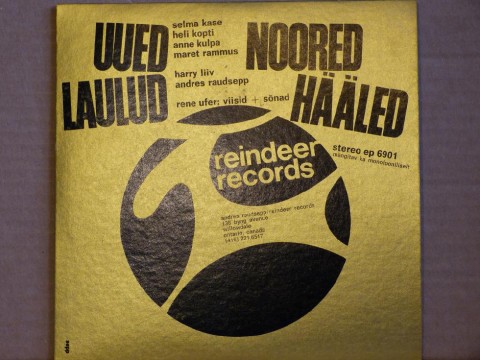
Seven years ago my daughter Järvi and I presented a selection of original Estonian Christmas music at Spadina House in Toronto. The presentation was called ,,Songs to Share - with dad and daughter” and included some thoughts about Estonian Christmas songs in the programme notes which I had prepared. These I wish to share now in the midst of popular Christmas singalongs in the Estonian community.
Estonian musical compositions made their appearance in the second half of the 19th century, a period of national awakening in territories that had been colonized for centuries by European imperial powers. Popular Christmas music, other than sacred hymns, appeared with the development of national independence in the early 20th century as part of a creative outburst in all cultural fields, particularly in music.
Songs written for children - mainly to be sung in schools - have remained in the hearts of adults over the years and are now sung extensively at seasonal social gatherings. Some have been adapted for solo material and choral works, often heard at the annual Christmas concert of the Toronto Estonian Male Choir.
Christmas songs in Estonia’s rich folksong tradition are rare.
The second half of the 20th century, however, has seen an almost explosive growth in Christmas choral music in Estonia and abroad – Australia, Canada, Sweden and the United States. Estonian composers Kaljo Raid and Roman Toi have contributed extensively to the choral repertoire of Christmas concerts sung by Estonian choirs.
Christmas music of a more popular genre is international in scope and has been passed from one language to another. (Yes, “White Christmas” and “Rudolph” have Estonian translations.) On the other hand, thanks to a number of earlier composers, Estonians have had Christmas music over past decades that they can call their own. Aleksander Läte, born in 1860, founder of the first symphony orchestra in Estonia in 1900, wrote the beautiful “Miks nii hilja jõulukellad”. Juhan Aavik (1884) and Enn Võrk (b. 1905), composers of national renown, are esteemed for creating anthem-like compositions causing audiences to rise in their seats. Both have written lighter Christmas music, particularly Aavik (“Läbi lume sahiseva”, “Õues tähis taevatelk”).
Advertisement / Reklaam
Advertisement / Reklaam
In the context of this article, Leo Virkhaus (b. 1910) deserves special mention. Known for serious choral works composed in the USA, he is the author of Estonia’s commercial success in Finland, “Tiliseb, tiliseb, aisakell” (1934), considered as the Estonian answer to “Jingle Bells” (1857 by James Pierpoint). In terms of recordings, there has been a wide selection of high-quality Christmas music, commercial and serious, available in Estonia since the restoration of independence in 1991. During the long period of exile abroad, however, Estonians developed their own diversified recording industry. It started producing 78 rpm records in the late 40’s and early 50’s and then proceeded quickly to 45’s and LP albums, even to commercial cassettes and early CDs. This activity was driven partly by a need to maintain an identity in danger of assimilation into broader cultures while the homeland was under Soviet occupation.
Starting in Sweden, the production of recordings had a period of unprecedented growth in the 60s And 70s. My own collection contains LPs of Christmas music by Helmi Betlem, Jüri Lipp, Ellen Parve, Naan Põld, Heinz and Matti Riivald and Segakoor “Leelo” (Eerik Purje, conductor).
The California-based Estonian pop-music composer, René Ufer, wrote a couple of light Christmas songs which were part of my very first recording production under the Reindeer label in 1969, called “Uued laulud, noored hääled” (New Songs, Young Voices). I heard one of René’s songs, the bright commercial-sounding ,,Kõikjal helgib jõulueelne valgus”, sung at rehearsal in Estonian House last month. So we finally made it into the Toronto Estonian School’s repertoire!
One of many Estonian Christmas recordings produced during
the exile years. This one is a rarity, a 7" stereo extended play (ep)
produced in 1969. Cover and logo by Peeter Sepp, it launched the
,,Reindeer" label for a limited number of Estonian LPs (1969 - 1976).

